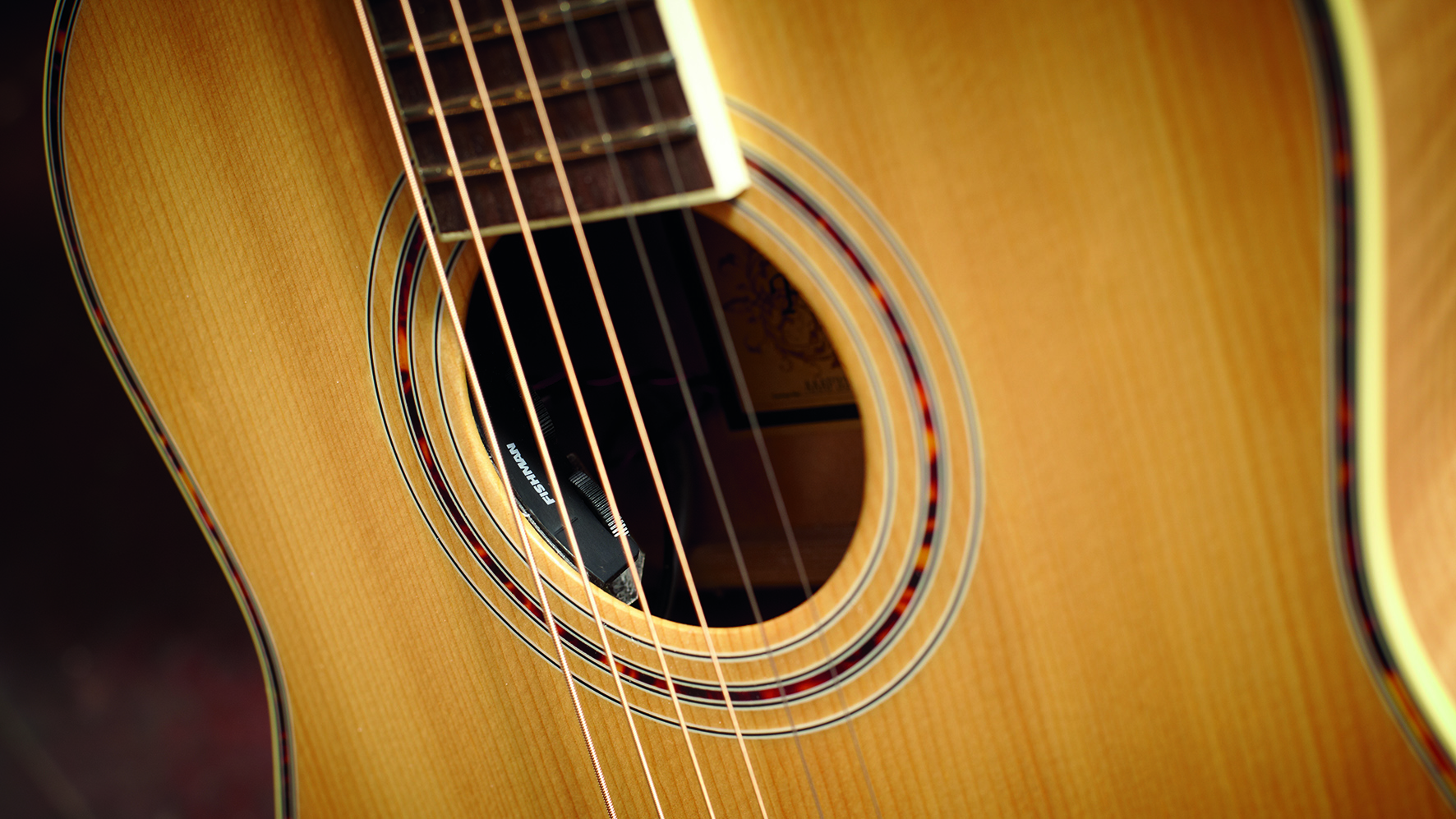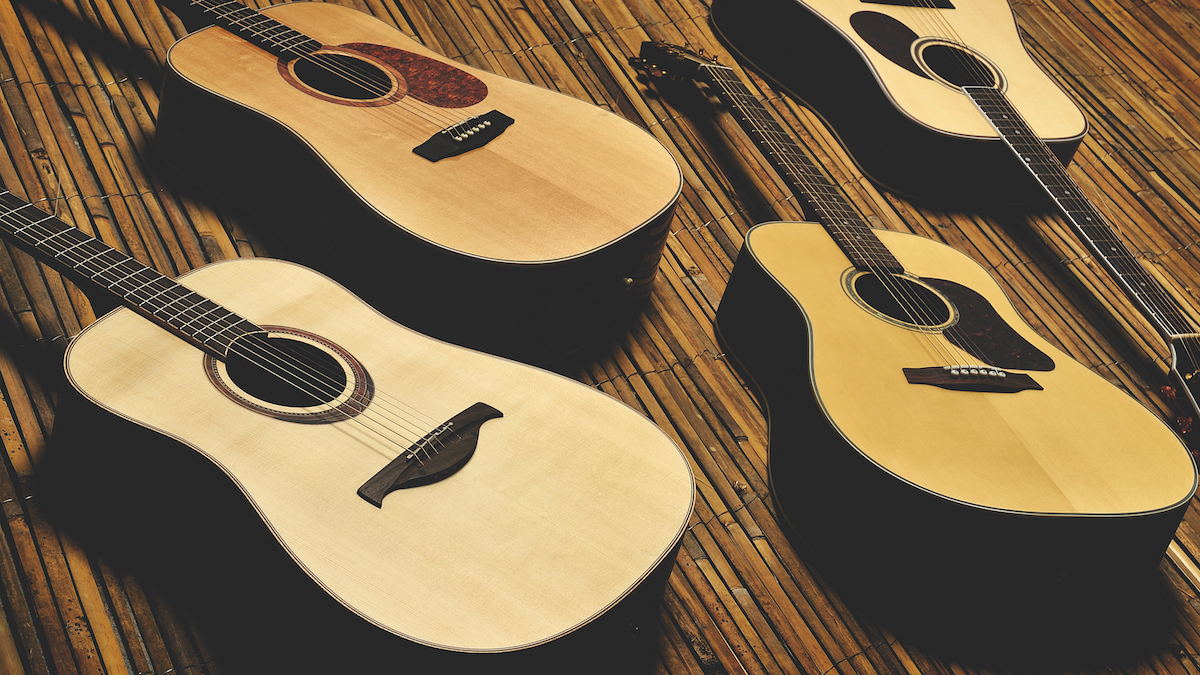6 simple ways to improve your acoustic guitar tone now
Affordable ways to upgrade your guitar's sound

Acoustic sounding tired? Follow some expert advice to breathe new life into your acoustic guitar with these inexpensive upgrades
It might seem like your options for upgrading your acoustic are somewhat limited. After all, solid woods and bracing rely on craftsmanship rather than aftermarket tweaks. There are some things you can try, though.
Before you rush to buy a whole new instrument, you might want to consider some simple, effective and affordable upgrades. To guide us, we’ve enlisted the help of two knowledgeable acoustic guitar experts: Martin’s Dave Doll (manager of Martin's Customer Repair Shop) and Taylor’s Andy Powers (master luthier for Taylor Guitars).
1. Picks

Andy Powers: “One of the most interesting upgrades you can do, for a guitar, is to get a better guitar pick.
“It’s ‘just a piece of plastic’, but that piece of plastic is what you’re using as a tactile connection to articulate the string. It’s hugely important.”
2. Saddle/nut material

Andy: “It does make a difference. That thing needs to be set up correctly, and if you have real low-quality material, you’re going to hear it.
“Think of the acoustic guitar as a signal chain: the very first thing the string resonates against is the saddle. The saddle is conducting every single note you play, so having quality saddle material and making sure the saddle fits into the slot well is really important.
Want all the hottest music and gear news, reviews, deals, features and more, direct to your inbox? Sign up here.
“If you compare the [Graph Tech] Tusq material to a soft injection-moulded plastic, the Tusq is leaps and bounds ahead. If you get a better material in there, and have it fit well, it’ll be your first big improvement.”
Dave Doll: “The saddle and the bridge pins are two really easy ways to upgrade your sound. Plastic is fine, it gives a really consistent sound, but if you go for brass or aluminium pins, you’ll get a brighter sound, more bell-like tones and more sustain. If you change to ebony or something soft, you may get the opposite: less sustain and more warmth.”
3. Strings

Dave: “Strings can change your guitar a lot! Not just between materials, but between different manufacturers, too. Strings are as much a variant as the guitar itself.
“Even if your guitar has the voice you want, picking a different kind of string is one of the quickest and easiest ways of changing that voice.

Discover the best acoustic guitar strings for your budget and playing style, including top picks from D'Addario, Martin, Elixir, and more
“Something like our standard 928 SP wire will give a bit of extra brilliance. They’re bright, but they still have a lot of roundness and mid tone. If you went for say, a 8020 bronze, they’re a little quieter, bright to start out with and then they mellow out very quickly.”
Andy: “Different acoustic guitar strings will have different characteristics, and it’s not that difficult or expensive to get a few different brands, even of the same-size string. Get a couple of different sets and work out what sounds best for your playing style and for you.
“If a player has $100 to spend on upgrading their acoustic guitar, the first place I would spend that money is on a few different sets of strings, and a big handful of different styles of picks.”
4. Diagnosing string buzz

A step-by-step guide to DIY'ing your bridge saddle height to get a better action
Dave: “The good thing is that guitars do a very good job of talking to people.
“If it’s buzzing open and you’re not touching anything, chances are that the nut slots are low, and the string is just sitting on the 1st fret.
“If it buzzes in the middle of the neck and not so much elsewhere, it’s probably that the neck itself is ‘round’. If you have a guitar with an adjustable truss rod, you can adjust it and flatten that out.”
5. Stringing and stretching

Andy: “It can actually matter. There are some subtleties that won’t make a lot of difference, but if you have a huge number of coils on the headstock that are all overlapping and messy, that can make your tuning unstable, because the metal is always compressing and won’t want to stay in tune.
“I’ve seen strings stretched to the point where they lose intonation and won’t stay in tune, so you don’t want to go too crazy.
“The core wire gives it some stiffness and strength, and along the string path there are a couple of points where it has to make a little bend. What you can do is put your string on, tune it up to pitch and get it set. Then, right behind the saddle, with the edge of your pick, press down a little to seat it against the saddle.
“You do the same over the nut, and then if you press the string against the tuning post, it’ll even out the last bend. The string will go flat in pitch, but when you tune up, it should be pretty stable from then on.”
6. Electronics

Dave: “The whole thing with acoustic pickups that people are looking for is to make it sound like your guitar but louder, right?
“So, to start with, you need to find the system that sounds how you want it to sound. It’s not just something that generates noise; it’s going to have its own characteristic.
“If you spend a couple of hundred dollars on a good electronics system, it doesn’t matter what the guitar sounds like acoustically. The pickup’s going to sound what it sounds like. You could put a Fishman Gold Plus in a 2x4, and it’s still going to sound like that system!”

Stuart has been working for guitar publications since 2008, beginning his career as Reviews Editor for Total Guitar before becoming Editor for six years. During this time, he and the team brought the magazine into the modern age with digital editions, a Youtube channel and the Apple chart-bothering Total Guitar Podcast. Stuart has also served as a freelance writer for Guitar World, Guitarist and MusicRadar reviewing hundreds of products spanning everything from acoustic guitars to valve amps, modelers and plugins. When not spouting his opinions on the best new gear, Stuart has been reminded on many occasions that the 'never meet your heroes' rule is entirely wrong, clocking-up interviews with the likes of Eddie Van Halen, Foo Fighters, Green Day and many, many more.

